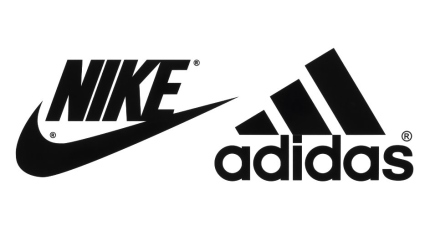Why Adidas Should Outperform Nike
Athletic footwear has come a long way from the humble “tennis shoes” of decades ago. Now, this kind of footwear has become the norm, especially with the enduring popularity of athleisure.

That’s why the Kantar BrandZ Most Valuable Global Brands 2021 ranking showed that apparel brands saw some of their fastest brand value growth in 2021, as shoppers grew their athleisure wardrobes. The apparel category grew in value by 53% over the last year, second only to consumer technology in the Kantar BrandZ global rankings.
The sector benefited from changing consumer habits during pandemic lockdowns, as shoppers prioritized loungewear and athleisure brands such as Lululemon, Nike, Puma, and Adidas.
Of these brands, it is Adidas (ADDYY) that offers investors the best mix of both growth and value. Let’s take a closer look.
A Look at Adidas
Adidas began its life in 1949, when co-founder Adolf “Adi” Dassler registered the Adi Dassler adidas Sportschuhfabrik (shoe factory). Dassler, the Adidas website states, “…set to work with 47 employees in the small town of Herzogenaurach, Germany. In the same year, he registered a shoe that included the registration of the soon-to-become-famous Adidas 3-Stripes.”
Today, the German brand sells a range of shoes, clothing, and sports equipment in more than 2,100 Adidas-owned stores, 15,000 franchises, and around 150,000 wholesale offerings worldwide. And its online channel has sprinted ahead in the last few years.
Adidas has moved far from its German roots, diversifying itself geographically. Today, the Americas and Europe together represent a little more than half of the company’s total sales. The Asia-Pacific region—where the company manufactures the bulk of its products—now accounts for a third of revenues.
However, Adidas rival Nike (NKE) controls a market-leading 25% of the fitness-and-fashion footwear category. Adidas is a solid second, with 15% of the market. This difference is reflected by what is usually a fairly small valuation gap between the two stocks. But not at the moment.
Adidas stock has experienced a sharp 35% drop in its share price this year, as rising inflation globally and economic shutdowns in China put pressure on all consumer discretionary stocks. Investors have not treated all athleisure brands alike, though.
This year the valuation gap between Nike and Adidas has turned into a wide gulf. Nike shares have recently been valued at about 24 times forward earnings. Meanwhile, Adidas trails far behind on a forward price to earnings (PE) multiple below 17. That is a seven-year low valuation for the stock.
Adidas Beats Nike
This valuation difference makes no sense, because Adidas has actually been growing its annual net income faster than Nike for most of the last decade. And, Adidas is well-positioned for a recession.
Economic slowdowns provide an opportunity for the power of a strong brand like Adidas comes to the fore. After recessions, strong brands emerge relatively unscathed, keeping both customers and high prices while smaller competitors lose out and may even disappear.
Adidas’s pricing power is already evident. Its 10-year average gross margin of 50% is higher than Nike’s, thanks to its higher mix of clothing and sports equipment sales. This is why analysts at Jefferies recently called Adidas as one of the “best global non-defensive stagflation plays,” having outperformed in at least four out of the past five stagflation-like episodes.
The company’s gross margin is expected to hit 55% in 2024, up from an estimated 52% in 2022, according to Morningstar. This growth will come from Adidas’s “Own the Game” strategy, the company’s effort to increase its direct-to-consumer (DTC) sales, which it debuted in 2021.
Currently, about 60% of Adidas’s sales are currently through multi-brand retailers. Moving away from this model would allow Adidas to pocket the entire profit from a pair of shoes. Management aims to make DTC account for over half of revenues by 2025, while doubling its e-commerce sales to $9.5 billion.
Adidas e-commerce efforts has now expanded to nearly 60 countries and generated about $4.1 billion in sales in 2021, accounting for 19% of its total. Adidas expects its e-commerce sales to rise to $8.4 billion to $9.5 billion in 2025, which seems achievable.
Adidas has doubled its dividend payout since 2015 through incremental rises and is on track to generate a 2.4% yield in the next year. There is little sign that management will divert from this course, and analysts forecast that Adidas will spend nearly $4 billion on dividends in the next five years, out of the $13.2 billion it will generate in cumulative free cash flow, of which another roughly $7.4 billion will go toward stock repurchases.
There is still uncertainty over Adidas’s exposure to China, as Asia-Pacific revenues fell 16% in the first quarter. However, its strong position in the growing athleisure market looks likely to set it apart from its rivals over the turbulent years likely ahead.
This combination of healthy cash generation and generous disbursements will provide a buffer for investors, with plenty of potential upside for shareholders.
Disclaimer: Information contained in this email and websites maintained by Investors Alley Corp. ("Investors Alley") are provided for educational purposes only and are neither an offer ...
more


